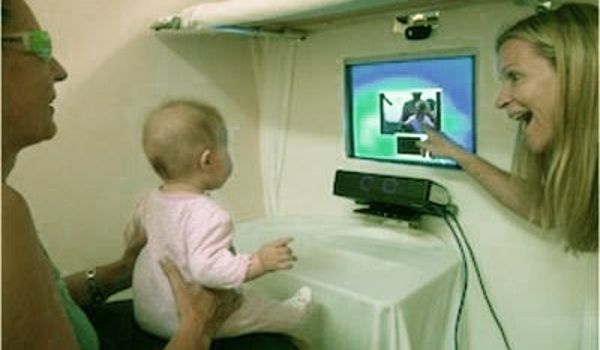While it’s not surprising that infants and children are fascinated by people’s movements and expressions, new research investigates where they look when they see someone using sign language. The study employs eye-tracking technology, which is a non-invasive and effective tool for studying cognition and language learning in pre-verbal infants.
Eye-gaze tracking technology was used on two groups of participants by researchers from Rochester Institute of Technology’s National Technical Institute for the Deaf (NTID). The technology tracked the gaze patterns of 62 normal-hearing infants (5–14 months) and children (2–8 years) as they watched a signer. Thirty of the participants had no prior exposure to American Sign Language (ASL), while the other thirty had parents who use ASL at home.
According to the study, infants from signing homes looked at the face first and then at the hand movements. Children and infants who were newly exposed to ASL preferred to look at the face and areas below the face.
Eye-tracking studies show different eye-gaze patterns in babies with deaf, signing parents compared to babies with hearing, speaking parents. Familiarity with sign language use appeared to influence infants as young as 5 months old in a study published in Developmental Science.
Rain Bosworth, an NTID researcher, and Adam Stone, an alumnus, studied early-language knowledge in young infants and children by recording their gaze patterns as they watched a signer. The goal was to determine whether the child came from a family that used spoken or signed language at home based solely on gaze patterns.
They tested two groups of hearing infants and children who spoke different languages at home. Hearing parents who spoke English and never used sign language or baby signs comprised one “control” group. The other group consisted of deaf parents who only communicated with their children using American Sign Language at home. In this study, both sets of children had normal hearing. The control group was exposed to sign language for the first time in the lab, whereas the native signing group was already familiar with it.
The study, which was published in Developmental Science, found that non-signing infants and children looked at areas on the signer known as “signing space,” which is located in front of the torso. When signing, the hands tend to fall in this area about 80% of the time. The signing infants and children, on the other hand, focused on the face and barely looked at the hands.

The expert sign-watching behavior, according to the findings, is present as early as 5 months of age.
“This is the earliest evidence for the effects of sign-language exposure that we are aware of,” said Bosworth. “At first glance, it appears counter-intuitive that non-signers are looking at the hands while signers are not. We believe signers maintain their gaze on the face because they have highly developed and efficient peripheral vision. Infants who are unfamiliar with sign language focus their attention on the hands in the signing space because that is what is perceptually salient to them.”
Another reason signing babies keep their gaze on the face is that they already understand the importance of the face in social interactions, according to Bosworth.
“We believe that the reason perceptual gaze control matures so quickly is because it supports later language learning, which is more gradual,” said Bosworth. “In other words, you must know where to look before you can learn the language signal.”
More research is needed, according to Bosworth, to understand the gaze behaviors of deaf babies who are or are not exposed to sign language. Bosworth’s research was funded by grants from the National Science Foundation and the National Eye Institute.
The use of sign language has been shown to benefit children in a variety of settings. Teaching sign language to preverbal babies has been shown to benefit children later in life. Sign language, according to research, accelerates speech development, reduces frustration in young children by allowing them to express themselves before they can talk, increases parent-child bonding, and allows babies to communicate vital information such as if they are hurt or hungry.
Infants who learn sign language are also thought to benefit psychologically, such as increased confidence and self-esteem. Anger may be suppressed as a result of an inability to communicate. When a child is too agitated to speak clearly, knowing how to sign could save his or her life.














